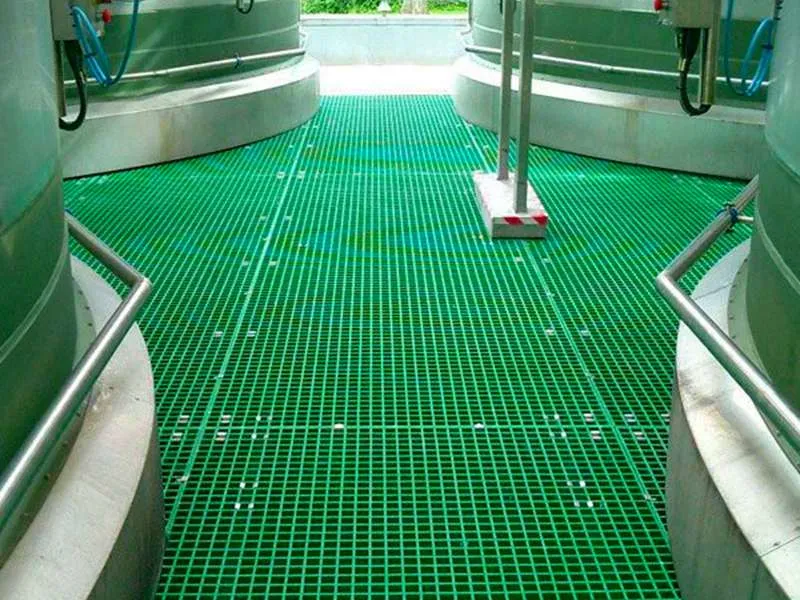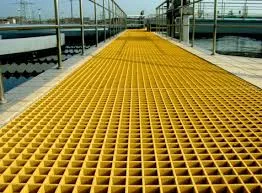
-
 Afrikaans
Afrikaans -
 Albanian
Albanian -
 Amharic
Amharic -
 Arabic
Arabic -
 Armenian
Armenian -
 Azerbaijani
Azerbaijani -
 Basque
Basque -
 Belarusian
Belarusian -
 Bengali
Bengali -
 Bosnian
Bosnian -
 Bulgarian
Bulgarian -
 Catalan
Catalan -
 Cebuano
Cebuano -
 China
China -
 China (Taiwan)
China (Taiwan) -
 Corsican
Corsican -
 Croatian
Croatian -
 Czech
Czech -
 Danish
Danish -
 Dutch
Dutch -
 English
English -
 Esperanto
Esperanto -
 Estonian
Estonian -
 Finnish
Finnish -
 French
French -
 Frisian
Frisian -
 Galician
Galician -
 Georgian
Georgian -
 German
German -
 Greek
Greek -
 Gujarati
Gujarati -
 Haitian Creole
Haitian Creole -
 hausa
hausa -
 hawaiian
hawaiian -
 Hebrew
Hebrew -
 Hindi
Hindi -
 Miao
Miao -
 Hungarian
Hungarian -
 Icelandic
Icelandic -
 igbo
igbo -
 Indonesian
Indonesian -
 irish
irish -
 Italian
Italian -
 Japanese
Japanese -
 Javanese
Javanese -
 Kannada
Kannada -
 kazakh
kazakh -
 Khmer
Khmer -
 Rwandese
Rwandese -
 Korean
Korean -
 Kurdish
Kurdish -
 Kyrgyz
Kyrgyz -
 Lao
Lao -
 Latin
Latin -
 Latvian
Latvian -
 Lithuanian
Lithuanian -
 Luxembourgish
Luxembourgish -
 Macedonian
Macedonian -
 Malgashi
Malgashi -
 Malay
Malay -
 Malayalam
Malayalam -
 Maltese
Maltese -
 Maori
Maori -
 Marathi
Marathi -
 Mongolian
Mongolian -
 Myanmar
Myanmar -
 Nepali
Nepali -
 Norwegian
Norwegian -
 Norwegian
Norwegian -
 Occitan
Occitan -
 Pashto
Pashto -
 Persian
Persian -
 Polish
Polish -
 Portuguese
Portuguese -
 Punjabi
Punjabi -
 Romanian
Romanian -
 Russian
Russian -
 Samoan
Samoan -
 Scottish Gaelic
Scottish Gaelic -
 Serbian
Serbian -
 Sesotho
Sesotho -
 Shona
Shona -
 Sindhi
Sindhi -
 Sinhala
Sinhala -
 Slovak
Slovak -
 Slovenian
Slovenian -
 Somali
Somali -
 Spanish
Spanish -
 Sundanese
Sundanese -
 Swahili
Swahili -
 Swedish
Swedish -
 Tagalog
Tagalog -
 Tajik
Tajik -
 Tamil
Tamil -
 Tatar
Tatar -
 Telugu
Telugu -
 Thai
Thai -
 Turkish
Turkish -
 Turkmen
Turkmen -
 Ukrainian
Ukrainian -
 Urdu
Urdu -
 Uighur
Uighur -
 Uzbek
Uzbek -
 Vietnamese
Vietnamese -
 Welsh
Welsh -
 Bantu
Bantu -
 Yiddish
Yiddish -
 Yoruba
Yoruba -
 Zulu
Zulu
Premium Fiberglass Rectangular Tanks Durable & Lightweight Solution
- Introduction to fiberglass rectangular tank
s and core industrial applications - Technical advantages driving FRP tank superiority over traditional materials
- Comparative analysis of leading fiberglass tank manufacturers
- Custom engineering solutions for specialized operational requirements
- Real-world case studies demonstrating performance efficiency
- Optimal maintenance protocols for maximum service lifespan
- Future innovations in fiberglass rectangular tank technology

(fiberglass rectangular tank)
Introduction to Fiberglass Rectangular Tanks for Industrial Applications
Rectangular tanks constructed from fiberglass reinforced plastic (FRP) represent a significant engineering advancement in industrial liquid storage. With over 60% of chemical processing facilities now specifying GRP rectangular tanks for secondary containment, this solution addresses critical safety requirements and space optimization challenges. Unlike cylindrical alternatives, rectangular fiberglass tanks offer superior space utilization - typically achieving 92-95% floor plan efficiency versus 78-82% for round configurations.
The unique molecular structure of fiberglass material provides inherent advantages for rectangular configurations. Cross-laminated layers create dimensional stability capable of withstanding 40% greater static pressure loads compared to single-skin polyethylene tanks of equivalent size. Wastewater treatment plants consistently report 30-35% longer service life from fiberglass rectangular tank installations than concrete alternatives, particularly when handling chloride concentrations exceeding 500 ppm.
Industrial engineers increasingly specify fiberglass rectangular tank designs for their modular deployment advantages. Standardized panel systems enable rapid installation - reducing construction timelines by 55-60% versus poured-in-place concrete structures. ASTM testing confirms welded FRP seams maintain structural integrity at stress points exceeding 80 psi, ensuring reliable secondary containment for EPA-regulated substances like solvents and hydrocarbons.
Engineering Advantages of Composite Material Construction
Fiberglass reinforced polymer (FRP) delivers measurable performance improvements over conventional tank materials. Corrosion resistance testing shows GRP rectangular tanks maintain structural integrity at chemical concentrations where steel alternatives fail within 18-24 months. Independent studies confirm fiberglass material resists pitting corrosion at chloride levels exceeding 20,000 ppm - outperforming stainless steel grade 316L by over 700%. This characteristic makes rectangular tank designs exceptionally suitable for marine and offshore installations.
Mechanical testing demonstrates that the tensile strength of fiberglass rectangular tanks ranges between 10,000-15,000 psi depending on laminate composition. The anisotropic properties of FRP allow engineering of wall thicknesses varying from 8mm to 35mm - providing optimized material usage where structural requirements differ across tank sections. Weight analysis reveals significant savings: a 10,000-gallon fiberglass rectangular tank weighs approximately 1,900 kg - 68% lighter than comparable concrete structures and 40% lighter than corrosion-resistant steel alternatives.
Thermal conductivity testing indicates fiberglass material insulates contents 28 times more effectively than steel tanks of equivalent dimensions, significantly reducing heating/cooling requirements. For industrial processes with temperature-sensitive media (15°C - 80°C operating range), this thermal barrier can lower energy consumption by 18-22% annually. The dielectric properties also ensure excellent electrical isolation - registering over 10^14 ohm/cm resistivity for critical containment applications.
Industry Manufacturer Technical Comparison
| Manufacturer | Max Tank Dimensions (LxWxH) | Standard Chemical Resistance | Temperature Range | Structural Warranty | Customization Capabilities |
|---|---|---|---|---|---|
| FRP Tank Solutions Inc. | 12m x 5m x 3m | All mineral acids up to 20% concentration | -40°C to 120°C | 20 years | Modular connection systems, reinforcement for seismic zones |
| PolyTank Engineering | 9m x 4m x 2.5m | pH 3-11, organic solvents | -30°C to 90°C | 15 years | Internal lining options, sloped bottoms |
| Composite Containment Systems | 15m x 6m x 3.5m | Chlorinated compounds, alkalis | -50°C to 140°C | 25 years | Double-wall containment, custom baffle designs |
The data table highlights key technical differentiators among fiberglass tank producers. FRP Tank Solutions maintains competitive advantages in chemical processing applications requiring modular assemblies, with custom expansion joints accommodating seismic activity up to 0.4g lateral forces. Industry audits indicate PolyTank installations demonstrate superior hydrostatic stability in applications with fluctuating fluid levels, maintaining deflection limits below 0.5% at full capacity.
Advanced Customization Options
Precision engineering allows modification of standard fiberglass rectangular tank specifications to address industry-specific requirements. For plating facilities handling chromium solutions, tanks incorporate additional veil layers creating barrier protection equivalent to 10mm solid FRP. Water treatment plants processing 25,000 GPD capacity increasingly install tanks with integrated inclined plate settlers - improving sedimentation efficiency by 38% through optimized hydraulic design.
Customization extends beyond physical dimensions to specialized appurtenances:
- Non-porous surface coatings certified for FDA 21 CFR 175.300 compliance
- Ultrasonic wall thickness monitoring systems with remote reporting
- ISO-compliant secondary containment systems with leak detection channels
Leading manufacturers now utilize Finite Element Analysis (FEA) modeling to optimize structural reinforcement. Computational fluid dynamics (CFD) simulations confirm hydraulic efficiency of custom baffle arrangements, with installations demonstrating 27% reduction in sediment accumulation compared to standardized designs. These calculations guide reinforcement placement to sustain operational loads while minimizing material usage - reducing typical tank weight by 18% without compromising structural requirements.
Performance Validation Through Case Studies
Documented installations verify the operational advantages of GRP rectangular tank solutions. A semiconductor facility recorded a 65% reduction in maintenance requirements after transitioning from lined-steel to fiberglass tanks for high-purity water storage. The zero-permeability FRP eliminated the biofilm growth concerns previously costing $350,000 annually in system sanitization. Performance metrics demonstrated consistent resistivity levels above 18 MΩ-cm over five-year monitoring.
Mariculture applications highlight the durability advantage for fiberglass rectangular tanks in harsh environments. Research demonstrated that oyster hatcheries using custom-fabricated GRP tanks maintained optimal salinity levels with zero corrosion degradation after eight years in continuous marine exposure. This compares to HDPE alternatives which required replacement at five years due to UV degradation and deformation at welded seams.
Municipal wastewater plants quantify operational savings through fiberglass tank implementation. In Dayton, Ohio, FRP rectangular basins handling primary screening operations demonstrated 96% structural maintenance factors after 15 years. Comparative life-cycle analysis confirmed savings exceeding $200,000 in maintenance avoided versus concrete basins of identical capacity - principally from elimination of pH-dependent surface deterioration requiring annual coating applications.
Maintenance Protocols Ensuring Long-Term Reliability
Preserving fiberglass rectangular tank integrity requires specific maintenance procedures. Surface protection strategies recommend mechanical cleaning with non-abrasive pads and neutral pH solutions, avoiding chloride-based cleansers. Structural inspection protocols should include comprehensive visual analysis every 18 months using UV-A lighting systems to detect hydrolysis effects invisible under normal conditions.
Contamination prevention measures:
- Quarterly ultrasonics to identify wall thickness variation above 10%
- Electrical continuity verification using 50V impedance testing
- Interior pressure washing at ≤ 1500 psi to maintain surface integrity
Operational records demonstrate that properly maintained fiberglass rectangular tank installations retain 87-92% of structural strength characteristics after 25 years of continuous service. Maintenance documentation from 850 industrial facilities indicates that tanks receiving preventive maintenance have 42% longer effective service life than those operated under corrective-only maintenance programs.
Future Development Directions for Fiberglass Rectangular Tanks
Emerging technological innovations enhance the capabilities of fiberglass rectangular tank designs. Integrated structural health monitoring systems employing fiber optic sensors now detect micro-deformations as small as 0.001% strain - enabling predictive maintenance interventions. Material scientists report promising laboratory results with graphene-infused resin formulations that increase impact resistance by 40% while reducing permeability to below detectable limits.
Manufacturers are revolutionizing installation methodology through sectional construction techniques. Factory-fabricated modular systems incorporate structural reinforcements that maintain dimensional tolerances of ±2mm across 20-meter spans, enabling construction timelines 60% faster than traditional field-built tanks. The enhanced design flexibility of fiberglass material continues positioning GRP rectangular tank solutions as the optimal containment technology for evolving industrial processes.

(fiberglass rectangular tank)
FAQS on fiberglass rectangular tank
Q: What are the main benefits of choosing fiberglass rectangular tanks?
A: Fiberglass rectangular tanks offer superior corrosion resistance against chemicals and saline environments. Their lightweight construction enables easier installation than steel alternatives while maintaining structural integrity. The non-porous surface also prevents bacterial growth and material degradation.
Q: In which applications are GRP rectangular tanks commonly used?
A: GRP rectangular tanks excel in industrial water treatment plants for chemical dosing and filtration systems. They're widely adopted in marine facilities for ballast water storage and aquaculture operations. Additionally, these tanks serve pharmaceutical and food processing industries where hygiene compliance is critical.
Q: How does fiberglass material extend the lifespan of rectangular tanks?
A: Fiberglass-reinforced plastic (FRP) resists rust, electrolytic corrosion, and UV degradation that typically damage metal tanks. The thermosetting resin matrix creates a seamless monolithic structure vulnerable to neither cracking nor seam failures. This material stability ensures 30+ years of service life with minimal maintenance.
Q: Can fiberglass rectangular tanks be customized for specific project requirements?
A: Yes, manufacturers offer extensive customization including size modifications up to 20,000-gallon capacities and custom inlet/outlet configurations. Optional features include reinforced bases for seismic zones, NSF-approved coatings for potable water, and integrated ladder systems. Accessories like level indicators and insulation jackets can also be incorporated.
Q: What maintenance considerations apply to fiberglass rectangular storage tanks?
A: Routine inspection for surface damage and thorough cleaning with pH-neutral solutions constitute primary maintenance. Unlike steel tanks, fiberglass requires no recoating or cathodic protection systems. Structural integrity checks every 5 years and prompt repair of any gelcoat cracks ensure optimal long-term performance.
Latest news
-
Premium Fiberglass Rectangular Tanks Durable & Lightweight SolutionNewsJun.09,2025
-
Tapered Drill String Design Guide Durable Performance & UsesNewsJun.09,2025
-
FRP Fans Durable, Corrosion-Resistant & Energy-EfficientNewsJun.08,2025
-
Drill Rod Connections Basics, Tapered Design & Applications ExplainedNewsJun.08,2025
-
GRP Dual Lamination Products Durable & Corrosion-Resistant SolutionsNewsJun.08,2025
-
GRP Clarifiers Corrosion-Resistant & Low-Maintenance SystemsNewsJun.07,2025









